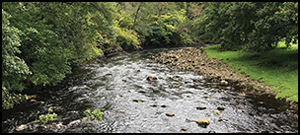Article contents
Fords and the frontier: waging counter-mobility on Hadrian's Wall
Published online by Cambridge University Press: 23 January 2020
Abstract

Mobility on the Tyne–Solway isthmus constitutes a gap in our understanding of the planning and functioning of the Roman frontier of northern Britain. Although the inflexible design of Hadrian's Wall appears insensitive to variations in local environment, identification of potential Roman-period fords suggests that securing river crossings was an important influence on military plans. The Roman army exploited established routeways to impose increasingly sophisticated systems to structure movement, initially via a system of forts, fortlets and towers—the Stanegate—and subsequently using a continuous barrier: Hadrian's Wall. As these measures evolved, so local communities experienced greater levels of military control and inequality.
- Type
- Research Article
- Information
- Copyright
- Copyright © Antiquity Publications Ltd, 2020
References
- 1
- Cited by




